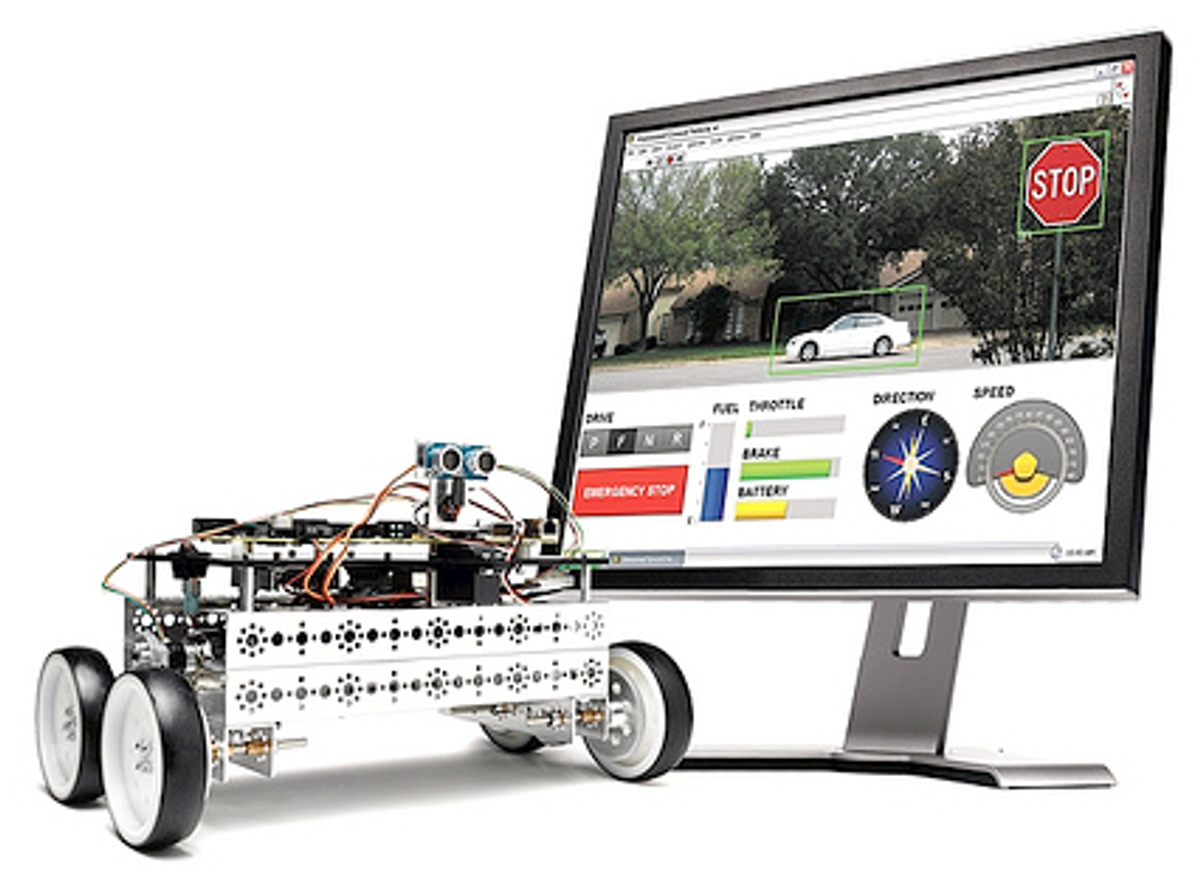A long time ago in a galaxy far away, two friends and I -- all EE undergrads -- set out to transform an RC car into a line-following mobile robot. We wanted to control it remotely from a PC, where we could implement PID and various other controllers. It took us long nights in the lab writing C code, soldering digital potentiometers to the remote control, and tweaking the finicky analog video camera. In the end -- after major repairs following an incident in which the robot hit a lab bench and exploded into pieces -- the little bot worked, making three nerds very happy.
As I look back, over 10 years later, it was a lot of work for a simple bot, and I can only imagine what it takes to build much more complex robotic systems. Wouldn't it be nice if there existed a robotics development platform with a graphical interface and support to standard sensors and actuators? You could simply connect a set of blocks representing the robot’s parts on a screen, then concoct a control strategy, put the hardware together, and click "Run."
On Monday, National Instruments announced one such platform. It's called LabView Robotics. In addition to LabView, the popular data-acquisition application, the package includes a bunch of tools specific to robotics. It can import codes in various formats (C, C++, Matlab, VHDL), offers a library of drivers for a wide variety of sensors and actuators, and has modules for implementation of real-time and embedded hardware. NI says engineers could use the package to both design and run their robotic systems.
Meghan Kerry, an academic product marketing engineer at NI, tells me that developing a relatively complex robot is becoming just too complicated, involving lots of software development, modeling and simulation, hardware integration, and so forth. "A roboticist needs to be an expert in all of those areas or manage a team of experts," she says. NI, she adds, wants to make design simpler and faster, so "a roboticist doesn’t have to spend time with things like developing drivers and can focus on the robot's algorithms and intelligence."
Now, I haven't tested LabView Robotics, so I don't have a detailed, first-hand review to report. The product is aimed at industry and academic users; a full license costs US $15,000, or you could get a $2,000 starter kit [photo above] that includes evaluation software, RIO hardware, sensors, motors, and other parts. What I find most interesting is the fact that the new package is an open platform, so users can easily share designs and code. If lots of people begin to do that, a huge resource for robotics projects could emerge. Bet you could even find a recipe for a line-following robot to be built in 15 minutes.
Photo: National Instruments
UPDATE: Here's a video showing some robots NI engineers have been testing:
Erico Guizzo is the Director of Digital Innovation at IEEE Spectrum, and cofounder of the IEEE Robots Guide, an award-winning interactive site about robotics. He oversees the operation, integration, and new feature development for all digital properties and platforms, including the Spectrum website, newsletters, CMS, editorial workflow systems, and analytics and AI tools. An IEEE Member, he is an electrical engineer by training and has a master’s degree in science writing from MIT.




